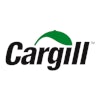“Options cost too much!” What elevator manager hasn’t heard this from a farmer about minimum price contracts? Premium cost may be the most commonly cited reason for not buying put or call options as a form of price ‘insurance’ in volatile markets. The irony is that options, with their inherent flexibility and limited risk for buyers, should give managers the confidence to buy puts or calls to set price floors or ceilings, especially in volatile markets.
The CME/CBOT tackled this dilemma head-on, launching Weekly Grain Option (“WGO”) Contracts in late May 2011. “Agricultural customers in particular are subject to short-term event risk, whether it’s a key upcoming USDA report or weekend weather during the growing season. The weekly corn, wheat and soybean options, combined with existing monthly and serial options, provide customers with much greater flexibility to manage risk associated with these events, while enabling them to benefit from the lower costs associated with short-dated options,” says Tim Andriesen, Managing Director, Agricultural Commodities and Alternative Investments, CME Group.
“Too expensive” is a relative phrase. Option premiums are composed of two costs: (1) intrinsic value, and (2) time value. Intrinsic value is the immediate exercise value of an option. Buying an $8 corn ‘call’ option when corn is worth $8.10, for example, has 10¢ of immediate exercise value. Buying an $8.50 corn call when corn is worth $8 has zero immediate value. But markets change quickly and both the $8 and the $8.50 corn call will have an additional cost known as the “time value.” T.V. is the compensation that option writers will demand for giving the option buyer price ‘insurance’ in uncertain markets. The time value cost is partly a function of the option’s days until expiration, meaning all else equal, short-dated Weekly Grain Options will be a more affordable alternative than longer standard and serial options on the same underlying instrument.
[Chart 1]
If Weekly $7.10 call options had been available on May 10, 2011, their expiration dates would have been as follows:
Week 2 May 13, 2011 (3 days until expiration)
Week 3 May 20, 2011 (10 days until expiration)
These “WGOs” would have had even lower premiums than the June serial or July standard options on July futures as shown above, which could have attracted more interest ahead of the USDA crop report on May 11, for example. End-users concerned about locking in remaining feed costs could have bought a Weekly May corn call, or farmers concerned about a potentially bearish report could have bought a Weekly May corn put option to protect against lower prices.
Weekly Grain Options aren’t really a new product. The contract specifications are the same as on other agricultural options; all that’s different are the expiration dates and that all Strike Price increments are 5¢.
[chart 2]
A Week Isn’t Always Seven Days….
The listing and expiration dates are where it gets confusing. The phrase “Weekly Grain Option”, or “WGO,” refers to the fact that there will now be an option expiring each Friday that doesn’t currently have an option expiration. But it does not mean there will always be an option with a maximum seven days until expiration. Newly listed WGOs will typically have approximately three weeks to their expiration. The array of dates is extensive but your broker will be able to supply you with complete listings and expirations, and the CME Group will also have the information on their website (www.cmegroup.com ). Here is the CME’s listing for the August and September 2011 corn and wheat options for illustration:
[chart 3]
Standard, serial, and now weekly grain options can all be used to manage risk outright, or in conjunction with futures or other option positions. A farmer who sells corn to you on a priced contract can have you buy a corn call option that will rise in value with futures. The cost of the call option is fixed, and therefore adding the call to the cash contract turns a fixed price contract into a minimum (“floor”) price contract. A feed customer might buy priced feed from a dealer and ask to have the dealer buy a put option to attach to the contract, which would convert the fixed price feed purchase into a maximum (“ceiling”) price contract. (The farmer and the feed customer would each be responsible for the cost of the respective call or put option in these examples.)
Or an end user of feed could go directly into the options market and buy corn call options to set a cap-price on corn. This gives the feeder the right to buy corn at the designated price. Later the end user could purchase the actual feed from one or more suppliers. If prices are higher any option gain goes to reduce the final feed cost. Or an end user could buy corn futures directly in the firm’s brokerage account to set the price of corn for their rations, and assuming prices rise substantially, might remain long but also buy put options (the right to sell futures) to protect against an unexpected sell-off
Options provide ways to manage risk that are not possible with outright purchases and sales of futures or cash positions. Now the lower-cost WGOs will bring that flexibility to more firms and individuals who have typically considered options ‘just too expensive.’
Launch date for CME “Weekly Grain Options” was May 23, 2011.


















